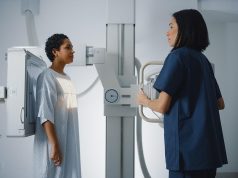Risk for breast cancer varies based on timing of first exposure, age at diagnosis
THURSDAY, Feb. 14, 2019 (HealthDay News) — p, p’-dichlorodiphenyltrichloroethane (DDT) is associated with breast cancer through age 54 years, according to a study published online Feb. 13 in the Journal of the National Cancer Institute.
Barbara A. Cohn, Ph.D., from Child Health and Development in Berkeley, California, and colleagues combined data from 153 incident breast cancer cases diagnosed at ages 50 to 54 years and 432 birth year-matched controls with 129 breast cancer cases diagnosed at ages 31 to 49 years and 129 birth-year matched controls from a previous study. Serum was assayed for p, p’-DDT, o, p’-DDT, and p, p’-dichlorodiphenyldichloroethylene.
The researchers found that for all women, p, p’-DDT was associated with the risk for early postmenopausal breast cancer (odds ratio [OR]DDT 50 to 54 = 1.99; 95 percent confidence interval [CI], 1.48 to 2.67). The correlation was accounted for by women first exposed to DDT after infancy (ORDDT 50 to 54 for first exposure after infancy = 2.83 [95 percent CI, 1.96 to 4.10] versus ORDDT 50 to 54 for first exposure during infancy = 0.56 [95 percent CI, 0.26 to 1.19]). For premenopausal breast cancer, there was a correlation for p, p’-DDT with risk among women with first exposure during infancy and through puberty but not after (ORDDT <50 for first exposure during infancy = 3.70; 95 percent CI, 1.22 to 11.26).
“Considering the patterns we observed, working backward to determine when a woman first came into contact with the chemical could help inform early detection and treatment of DDT-associated breast cancer,” Cohn said in a statement.
Copyright © 2019 HealthDay. All rights reserved.








